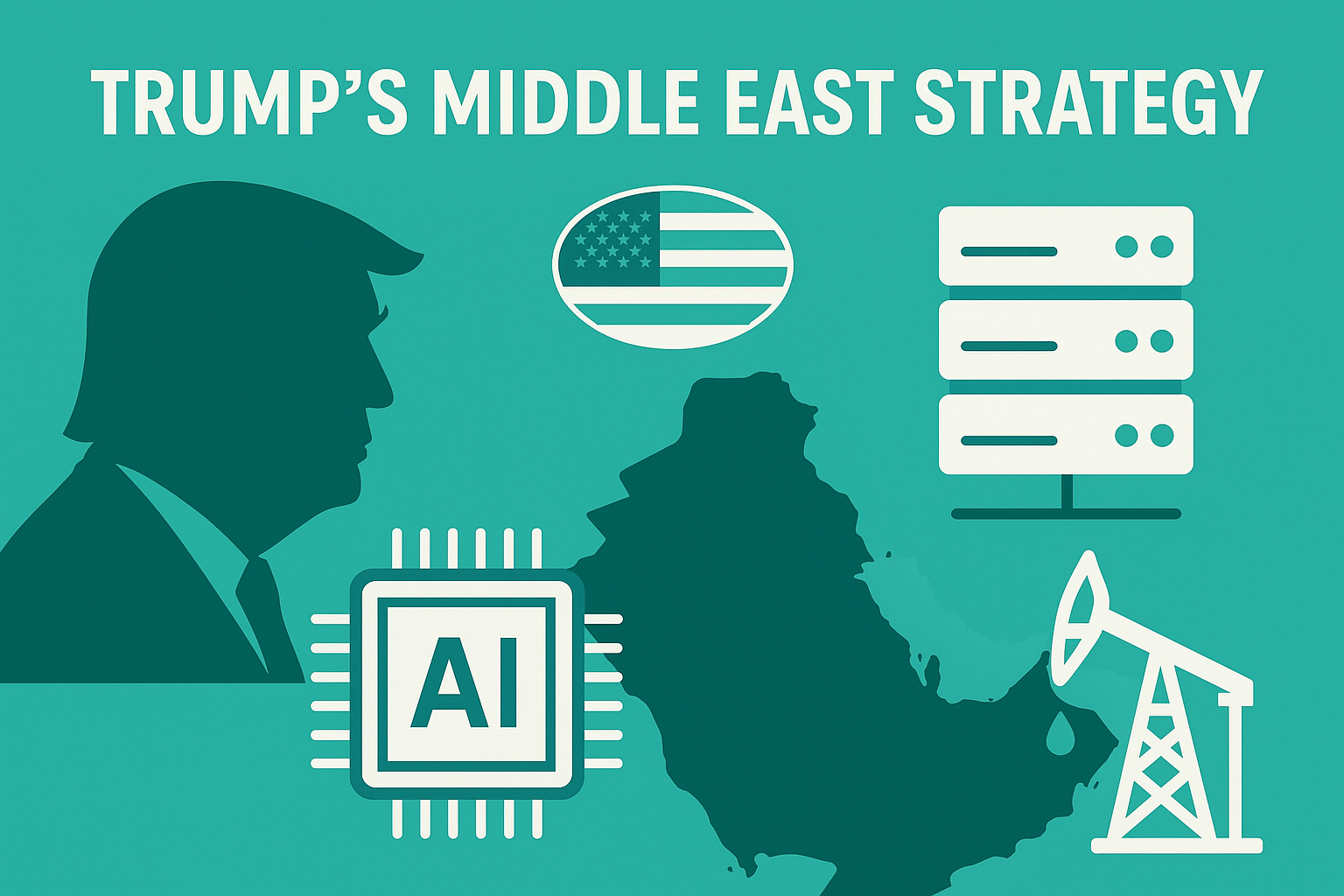Executive Summary
The Trump administration’s Middle East policy in its second term has shifted from a purely energy- and security-oriented framework toward one anchored in AI infrastructure and hyperscale data centers.
- At its core, Washington is leveraging massive Gulf investments in AI compute (Saudi Arabia, UAE) to reinforce alliances, counter China, and bind energy flows to the digital economy .
- Flagship projects include the 5-gigawatt AI campus in Abu Dhabi (G42-led, with U.S. hyperscaler partners) and Saudi Arabia’s Humain initiative building multiple 100MW data centers stocked with NVIDIA and AMD chips .
- Policy adjustments—such as loosening export restrictions on GPUs and decoupling Saudi civil nuclear cooperation from Israel normalization—demonstrate a more transactional, “deal-first” approach .
1. Current Developments
- UAE (Abu Dhabi – G42): Announcement of a 10-square-mile AI campus, scaling to 5GW of compute power. U.S. hyperscalers are expected to operate the facilities, while G42 manages construction. Reports suggest annual imports of up to 500,000 top-tier NVIDIA GPUs .
- Saudi Arabia (Humain): Launch of a national AI infrastructure company. Initial campuses in Riyadh and Dammam (each up to 100MW), powered by NVIDIA Blackwell and AMD accelerators, with 18,000 units already allocated .
- U.S.–Saudi Economic Framework: The White House announced a $600B investment package, including $20B from DataVolt into U.S. AI and energy infrastructure .
- Regulatory Shift: Trump rescinded earlier AI diffusion export rules, easing GPU supply to the Gulf, though conditioned on U.S. monitoring and compliance mechanisms .
- Nuclear/Energy Diplomacy: The administration is advancing Saudi civilian nuclear cooperation independently of Israeli normalization, breaking with past linkage strategies .
2. Strategic Logic
A. Objectives
- Counter China in Tech: Position Gulf AI campuses as hubs for U.S. chip and cloud ecosystems, setting de facto standards .
- Alliance Binding: Package defense, nuclear cooperation, and digital infrastructure to deepen economic and security interdependence .
- Energy–AI Nexus: Link the Gulf’s cheap energy and transmission assets to AI’s soaring electricity demand .
B. Means
- Mega-projects (UAE 5GW, Saudi 100MW-class DCs) as tangible anchors.
- Export regime redesign, enabling GPU supply under U.S. oversight .
- Capital bundling, channeling Saudi outbound investment into U.S. infrastructure and job creation .
C. Expected Outcomes
- Short-term: Gulf states emerge as “third-pole compute hubs,” stocked with U.S. GPUs and cloud services.
- Medium-term: Secondary industries in cooling, grid storage, and semiconductors scale around these hubs.
- Long-term: Tech-energy-security trilateral order stabilizes, potentially expanding Abraham Accords participation .
3. Risk Factors
- Deal Finalization Gaps: UAE’s 5GW campus is announced but not fully secured; U.S. agencies scrutinize China’s lingering tech links .
- Supply Constraints: Physical limits on GPU production, electricity, and water for cooling threaten scalability .
- Regulatory Backlash: U.S. Congress or security agencies may re-tighten export reviews, slowing project execution .
4. Scenario Outlook
- Best Case: First gigawatt of UAE campus online, Saudi Humain operational by 2026, cementing a U.S.–Gulf compute corridor.
- Base Case: Projects proceed gradually with enhanced audit clauses; execution slower but steady.
- Worst Case: Export or security reviews stall GPU flows; power and cooling constraints shrink ambitions, pushing Gulf states toward Chinese or European alternatives.
5. Strategic Implications
- “Geopolitics of Compute” emerges as central: chips, cloud, and compliance define alliances more than oil alone.
- Gulf States pivot from energy exporters to AI states, using their capital and electricity as leverage.
- Execution risk lies in finalizing contracts and building reliable infrastructure. Governance and monitoring will determine whether these megadeals truly anchor U.S. strategy.


